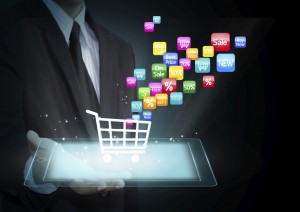As Marketing gets more complex, marketers get further away from the frontline reality of selling goods and services. Agencies are sometimes the worst detractors, mischievously encouraged by clients, spinning new fangled theories and services into the mix. The words change but the mission remains the same: to sell.
Brands spend billions of dollars in activity and research whose measures are obfuscations and often anything but sales. We measure Exposure (ratings, reach, frequency, views, pages, time, bounces); Engagement: (fans, shares, “likes”, “buzz”); and Emotion (consideration, inclination, recommendation, emotional connection). At times I think there is a protectionist conspiracy to avoid linking these to a sale.
In China sadly all measures — even valid metrics — need to be taken with a pinch of salt; or a large double whisky if you’re a CMO. The figures are mostly unaudited lies or false promises fulfilled by click fraud or zombie fans. Yet, in developed markets the lies in my view are often simply more developed — to borrow a phrase from my lawyer: “a professional is someone whom you pay to lie on your behalf”. The only proof I need in my marketing metrics is a sale.
On the 11th day of the 11th month, China has a sales promotion online called “singles day”; (by China I mean TaoBao which drives 75% of B2C and C2C eCommerce). Its sole purpose is not to make the unwed, feel ghastly or good about themselves: no, 11.11’s sole purpose is all about traders; selling; buying – where the marketing rubber hits the sales tarmac.
Within 3 years it has become the greatest single “market” event in the world. $5bn dollars of sales are generated online in 24 hours. 40% in the first hour, 45% from mobile phones. Within 24hours every traditional lever; every aspect of advertising – branding, communications, media, search, social, CRM and PR; and a few inappropriate levers – bribery, seduction, and subterfuge; is put under the microscope and forced to justify itself by a measure of sales.
As a seller the process is exhilarating, petrifying, incredible, ghastly and extraordinary: China in a nutshell. Every conceivable product is being traded. Imagine a billion people packed into the trading floor of stock exchange with buyers and sellers hollering their wares and bartering prices. In real time brands can see their level of sales compared with other brands, and in the frenzy and excitement they jostle for position to reach the top of the leader board.
This is the ultimate marketing environment played out in real time: transparent, competitive, and visceral. At TaoBao there’s a vast screen, also viewable online, that shows which sectors, brands and products are driving sales. Brands can see their sales, vs shopping baskets vs browsers – compared with everyone else in the market.
One seller, a western apparel brand, described their day to me. They had performed really well, and they realized they were only $7m away from taking the #1 sales position for their category – way beyond their dreams. The CEO was glued to the screen all day, and during their final sales scrum at 9pm, they made a decision to push for the #1 rank. They could see that $30m sales were stuck in people’s shopping baskets, so they began to call these people and chase them on IM to negotiate promotions: ‘Buy the jacket, and get a free pair of boots”: $3m shifted; “Buy one get one free – no delivery charges!”: $2m shifted. One hour before close they saw competitors pull out of banners and adwords, and they decide to go big and dominate the market, leveraging some social media to pull in extra punters with finely tuned offers to generate another $3m.
In such a complex world it is more important than ever to get all investments pointing at the same single minded direction. It’s the CEO’s job to set the direction, the CMO’s job to work the levers; and everyone’s role to drive the sale. As David Ogilvy said: “We sell, or else”.
If you would like a copy of the top 10 “What you can learn from a market trader: how to drive sales in TaoBao” drop me a line @barneylo.
